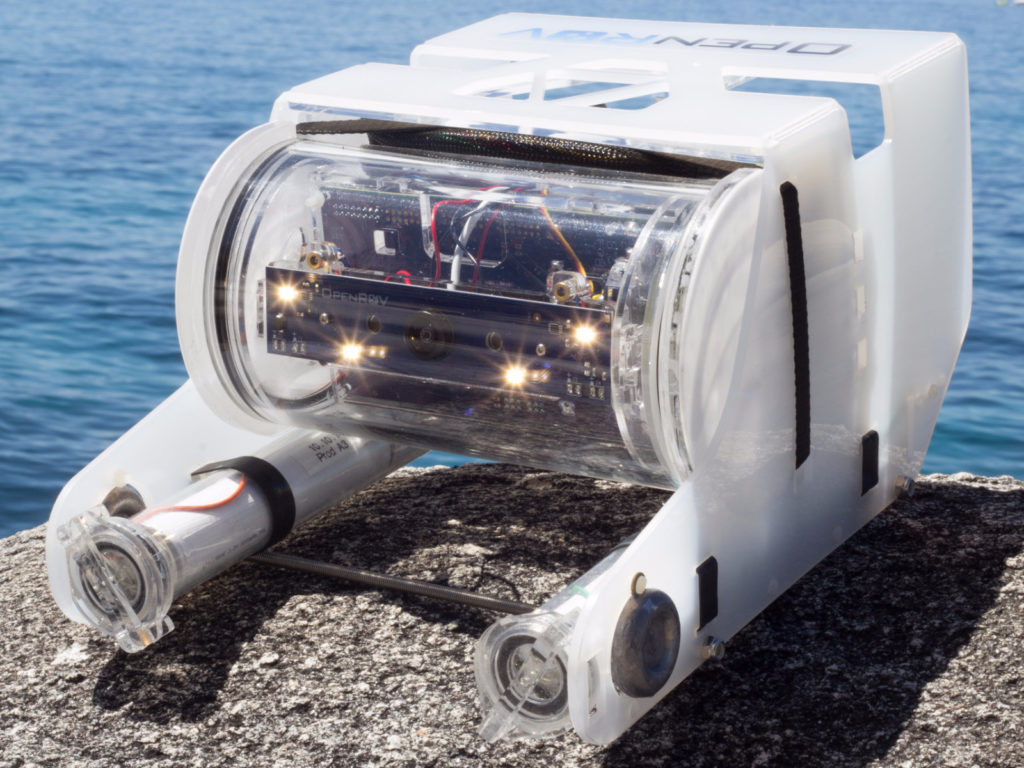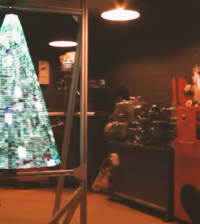- How to Adjust X and Y Axis Scale in Arduino Serial Plotter (No Extra Software Needed)Posted 7 months ago
- Elettronici Entusiasti: Inspiring Makers at Maker Faire Rome 2024Posted 7 months ago
- makeITcircular 2024 content launched – Part of Maker Faire Rome 2024Posted 9 months ago
- Application For Maker Faire Rome 2024: Deadline June 20thPosted 11 months ago
- Building a 3D Digital Clock with ArduinoPosted 1 year ago
- Creating a controller for Minecraft with realistic body movements using ArduinoPosted 1 year ago
- Snowflake with ArduinoPosted 1 year ago
- Holographic Christmas TreePosted 1 year ago
- Segstick: Build Your Own Self-Balancing Vehicle in Just 2 Days with ArduinoPosted 1 year ago
- ZSWatch: An Open-Source Smartwatch Project Based on the Zephyr Operating SystemPosted 1 year ago
DIY Open Source Submarine Drone

Trident is a multipurpose open source submarine drone. It’s ideal for:
- Boating and fishing – Deploy in seconds to see what’s underwater; inspect props, rudders, hulls, and anchors; find fish better than a fish finder
- Diving – Scout and find dive sites; explore up to 100m and more technical locations using Trident; stream live video to friends who can follow along on your dive from the boat; dive masters can keep an eye on everyone from the boat
- Explore – Easy, fast, and fun; capture beautiful video using Trident’s underwater-optimized HD camera; share video with friends; join a community of explorers who share the same curiosity for the underwater world
- Marine Science – Upgradeable and expandable to meet the needs of your projects; Trident has a mounting standard for new instrumentation, modules, or payloads; Trident communicates with peripherals through a standard wireless protocol; open-source license allows developers to extend the software
Everything you need to pilot your drone is just a web browser and a laptop, tablet, or smart phone.
Trident is designed to be able to add new sensors, instruments, and payloads. The software that powers Trident is a live open-source project. Thanks to the ocean-loving community, you can find all the software and hardware files online as well as a vibrant and enthusiastic community to share adventures, ask questions, and meet other people with passion for exploration.
The Openrov 2.8 starter kit is already available: Beaglebone Black and Arduino MEGA microprocessors provide a flexible and powerful developer platform with dozens of input/output channels and plenty of computing power for user-designed features and experiments
Full specs here:
Physical specifications:
– Weight 2.6kg
– Dimensions 30cm long x 20cm wide x 15cm high
– Nominal battery life using rechargeable lithium batteries is 2-3 hours (depending on use)
Performance specifications:
– Maximum depth 100m (328ft)
– Maximum tether length 300m (100m tether provided)
– Maximum forward speed 2 knots
– LED brightness 200lm
– Temperature capability -10C to 50C
– Software controlled camera tilt (+/- 60 deg from center)
Instrumentation:
– HD Webcam (120 deg FOV) with audio
– Red Scaling lasers (parallel, 10 cm separation)
– Current and voltage protection with feedback to ensure proper system function
– External I2C bus with 3.3V power for external instrumentation
– 6 additional auxiliary wires for user-defined external instrumentation or devices. One power PWM channel and one servo control channel are preconfigured.















